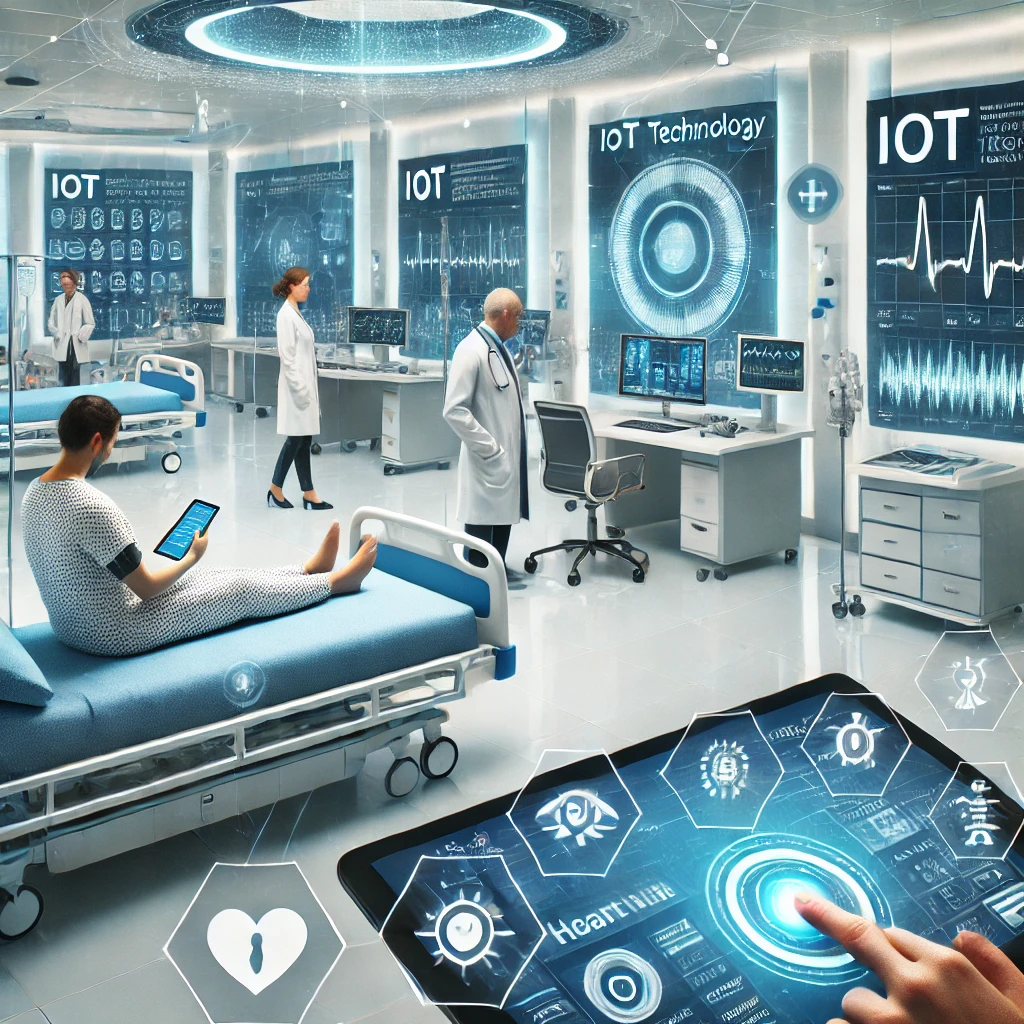
Introduction to IoT in Healthcare
The Internet of Things (IoT) is revolutionizing many industries, with healthcare being one of the most impacted sectors. From wearable devices to smart hospital systems, IoT technologies are improving patient care and optimizing operations. This article explores The Role of IoT in Healthcare, highlighting its benefits, challenges, and future potential.
What Is IoT in Healthcare?
The IoT in healthcare refers to the network of connected devices that gather and exchange data to enhance medical services. These devices can include wearables, remote monitoring tools, and smart implants. By integrating these technologies, healthcare providers can access real-time information, leading to better patient outcomes.
Key Components of IoT in Healthcare
- Wearable Devices
- Fitness trackers and smartwatches help monitor physical activity, heart rate, and sleep patterns.
- Advanced devices can detect irregular heart rhythms or other health issues, alerting users to seek medical attention.
- Remote Patient Monitoring (RPM)
- RPM devices track vital signs such as blood pressure, glucose levels, and oxygen saturation.
- These tools allow doctors to monitor patients with chronic illnesses without frequent hospital visits.
- Smart Medical Devices
- Smart insulin pens and inhalers provide precise doses while tracking usage patterns.
- Connected devices like these ensure treatment adherence.
- Smart Hospital Systems
- IoT sensors and devices streamline hospital operations, from managing inventory to monitoring patient rooms.
- Automated systems reduce human error and enhance efficiency.
Benefits of IoT in Healthcare
Improved Patient Care
The Role of IoT in Healthcare significantly improves patient outcomes. For example:
- Real-time monitoring enables early detection of medical conditions.
- Personalized treatment plans based on data insights improve effectiveness.
Increased Operational Efficiency
Hospitals leveraging IoT can automate various tasks, such as:
- Inventory management for medical supplies.
- Scheduling systems for staff and patients.
Cost Savings
IoT reduces healthcare costs by:
- Preventing unnecessary hospital visits.
- Optimizing resource allocation and reducing waste.
Enhanced Patient Engagement
IoT empowers patients to take control of their health:
- Wearables provide immediate feedback on lifestyle choices.
- Remote consultations reduce barriers to healthcare access.
Challenges of Implementing IoT in Healthcare
Data Security and Privacy Concerns
The exchange of sensitive health information raises significant concerns, such as:
- Data breaches exposing confidential medical records.
- Non-compliance with privacy regulations like HIPAA or GDPR.
Integration Issues
Many healthcare systems struggle to integrate IoT technology due to:
- Legacy systems not compatible with modern IoT solutions.
- High costs of overhauling existing infrastructure.
Reliability and Accuracy
IoT devices must be reliable and accurate to ensure trust in their readings:
- Faulty devices can lead to incorrect diagnoses.
- Regular maintenance and calibration are required.
High Initial Investment
Adopting IoT technology often involves substantial upfront costs for:
- Device procurement and installation.
- Training medical staff to use the systems effectively.
Real-World Applications of IoT in Healthcare
Chronic Disease Management
Patients with chronic conditions benefit immensely from IoT:
- Devices track daily metrics for diseases like diabetes or hypertension.
- Doctors can adjust treatments in real-time based on accurate data.
Elderly Care
IoT solutions support independent living for the elderly by:
- Monitoring falls or unusual activity patterns.
- Sending alerts to caregivers or emergency services.
Smart Hospitals
Hospitals use IoT for various purposes, including:
- Optimizing patient flow and reducing wait times.
- Tracking medical equipment to prevent loss or theft.
Telemedicine
IoT enhances telemedicine by:
- Connecting patients with doctors through secure platforms.
- Sharing real-time health metrics for accurate remote diagnoses.
Future Trends in IoT Healthcare
AI and IoT Integration
Artificial Intelligence (AI) combined with IoT will bring smarter devices:
- Predictive analytics for early disease detection.
- Enhanced diagnostic accuracy with machine learning.
Blockchain for Security
Blockchain can address privacy issues by:
- Securing patient data with decentralized systems.
- Ensuring transparent and tamper-proof records.
5G Connectivity
Faster networks will enhance IoT capabilities by:
- Supporting real-time data transmission for critical applications.
- Improving telemedicine experiences.
Personalized Medicine
IoT will drive personalized healthcare by:
- Analyzing individual health data for tailored treatments.
- Monitoring genetic factors for precision medicine.
Ethical Considerations in IoT Healthcare
Patient Consent
Patients must understand how their data will be used:
- Clear consent processes are essential.
- Transparent policies build trust in IoT systems.
Accessibility
IoT solutions should be accessible to all, regardless of socioeconomic status:
- Governments and organizations must bridge the digital divide.
- Subsidies can make technology affordable for underserved communities.
Environmental Impact
IoT devices contribute to electronic waste:
- Manufacturers should prioritize eco-friendly designs.
- Recycling programs can mitigate environmental harm.
How IoT Revolutionizes Healthcare Delivery
The Role of IoT in Healthcare has transformed the traditional model by:
- Reducing dependence on in-person visits.
- Enabling proactive health management through constant monitoring.
- Providing data-driven insights for evidence-based decisions.
Balancing Benefits and Challenges
While the advantages of IoT in healthcare are undeniable, challenges remain:
- Stakeholders must address security, integration, and cost issues.
- Collaboration between governments, tech companies, and healthcare providers is vital.
Conclusion
The Role of IoT in Healthcare is a game-changer for the industry. From improving patient care to optimizing operations, IoT has far-reaching implications. However, addressing its challenges is crucial for realizing its full potential. As technology evolves, IoT promises to create a future where healthcare is more efficient, accessible, and personalized than ever before.
Read more :
- https://rmm.abyadi.com/iot-in-transportation-smart-cities/
- https://rmm.abyadi.com/iot-enhances-industrial-efficiency-in-smart-factories/
- https://rmm.abyadi.com/iot-smart-farming-for-a-sustainable/